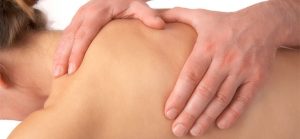
As physio’s, we move things that are stiff and stabilise others that are loose (or get you to work on stabilising it). We utilise many techniques to do this including education on how to move correctly. But being ‘hands on’ physio’s means we’re also really focussed on developing greater movement in your joints and easing muscles spasm.
We utilise Mobilisation (movement) and manipulation (adjustments) of your joints and Remedial Massage techniques to release muscles. It’s important that both the joints and muscles are released because they rely on each other for movement and power. The release of one only means the system will tighten again prematurely and therefore keep you in dysfunction and pain. Having the skills to do both means we get you back pain free much quicker, for longer.
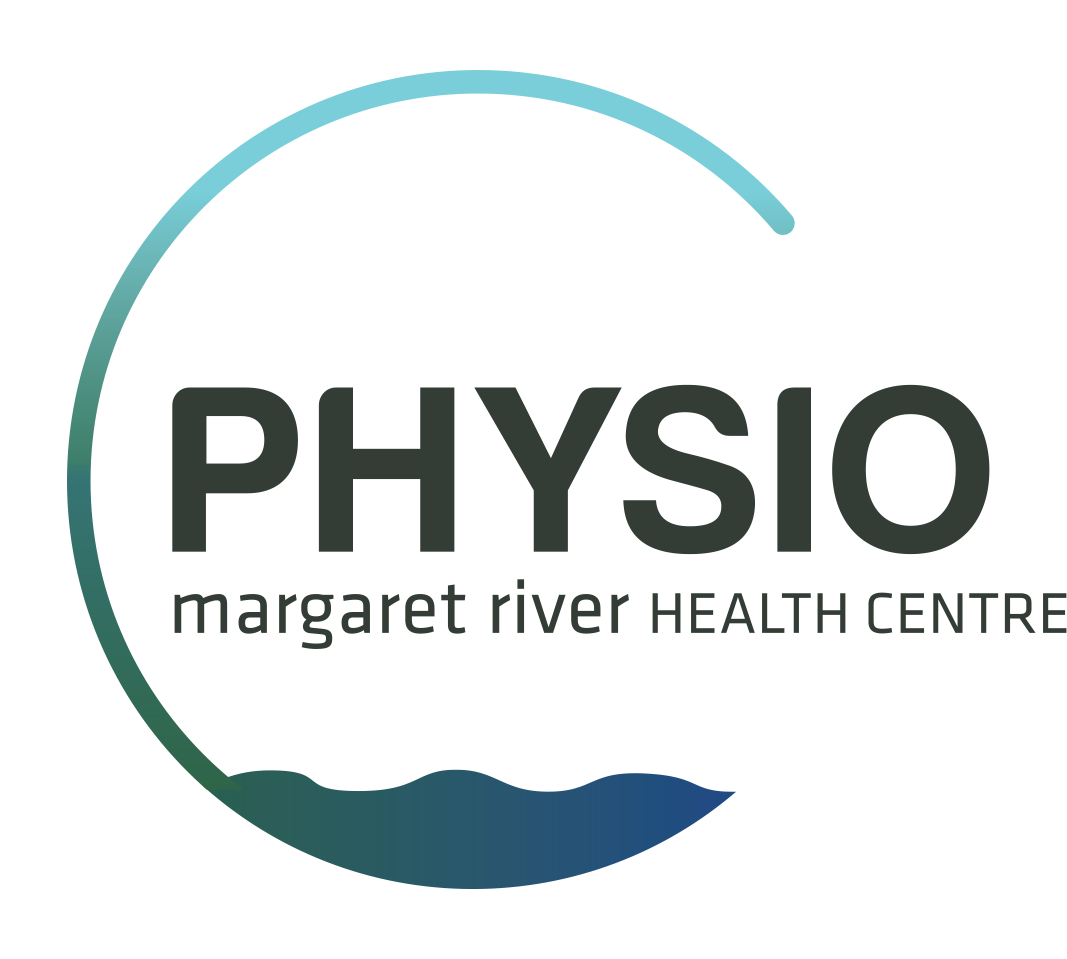


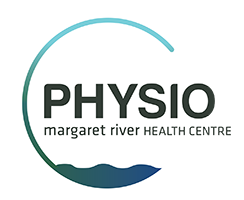
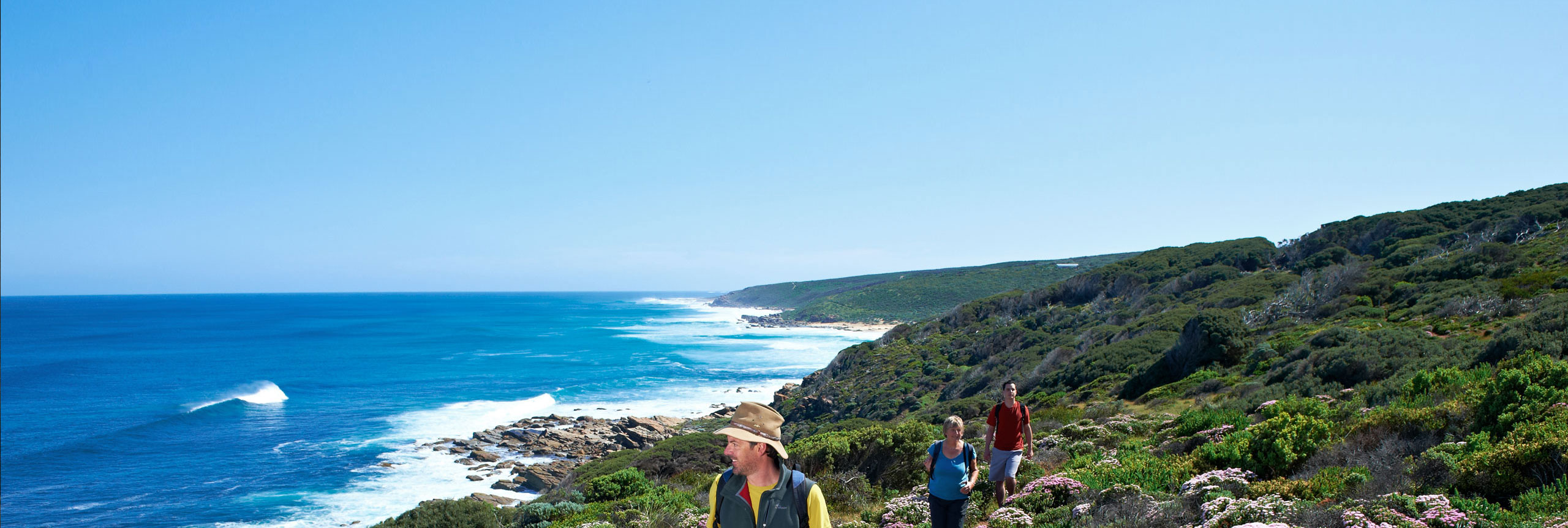
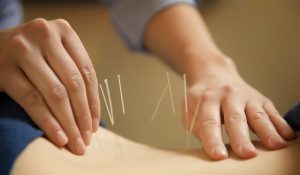 Between Simon, Ed and Gaynor, we have the abilities to incorporate both acupuncture and dry needling to ensure treatment is effective and holistic.
Between Simon, Ed and Gaynor, we have the abilities to incorporate both acupuncture and dry needling to ensure treatment is effective and holistic.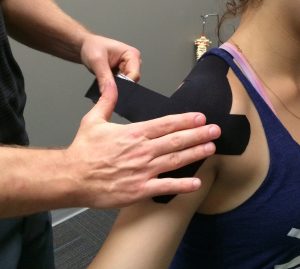 Restoring optimum pain free movement is one of the most important goals when rehabilitating an injury. Which is why we commonly use Rocktape on patients. It does various things such as normalising muscle tone, distributing stress, delaying fatigue and decompressing swelling. But more importantly, we find it extremely beneficial as a training tool, to teach people where their body parts are, versus where they should be. This feedback is called proprioception and is basically how well you brain coordinates with your limbs. ‘Where your body is in space.’
Restoring optimum pain free movement is one of the most important goals when rehabilitating an injury. Which is why we commonly use Rocktape on patients. It does various things such as normalising muscle tone, distributing stress, delaying fatigue and decompressing swelling. But more importantly, we find it extremely beneficial as a training tool, to teach people where their body parts are, versus where they should be. This feedback is called proprioception and is basically how well you brain coordinates with your limbs. ‘Where your body is in space.’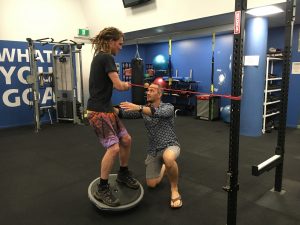 We understand that to live pain free means you need to move well. Good movement starts from the feet up, just the way energy is absorbed through the body. The greater the load on the body, the more shock absorption you need.
We understand that to live pain free means you need to move well. Good movement starts from the feet up, just the way energy is absorbed through the body. The greater the load on the body, the more shock absorption you need.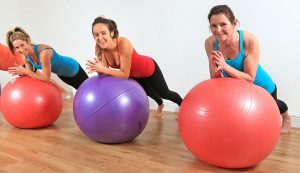 Every school term for the last 12 years, Simon Lentjes (Physiotherapist) has been running Spinal Fitness Classes to provide a tailored program aimed at developing spinal strength and flexibility. The classes utilise the concepts of Pilates, Fitball, and yoga stretching principles to provide a safe and effective way of improving your individual back dysfunction.
Every school term for the last 12 years, Simon Lentjes (Physiotherapist) has been running Spinal Fitness Classes to provide a tailored program aimed at developing spinal strength and flexibility. The classes utilise the concepts of Pilates, Fitball, and yoga stretching principles to provide a safe and effective way of improving your individual back dysfunction. Margaret River Manual Handling Training has been conducted by Physiotherapist Simon Lentjes for over 12 years. Voyager Estate, Leeuwin Estate, Vasse Felix, Cape Mentelle, Devils Lair and Stella Bella Wineries have all been utilising these training sessions for years and appreciate the ‘hands on’ style of training.
Margaret River Manual Handling Training has been conducted by Physiotherapist Simon Lentjes for over 12 years. Voyager Estate, Leeuwin Estate, Vasse Felix, Cape Mentelle, Devils Lair and Stella Bella Wineries have all been utilising these training sessions for years and appreciate the ‘hands on’ style of training.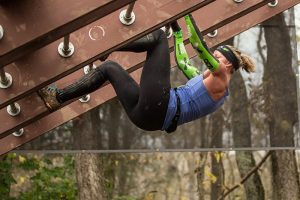 Our physios look after all types of musculoskeletal conditions, but we have a special interest in the management of sport injuries. That’s why we are members of Sports Medicine Australia. We take great pride in being involved with various sporting professionals, and helping them to achieve their goals and their dreams. We understand what it takes to get them performing at their peak and we work closely to get them ready for race day. We’ve treated world champion surfers to the weekend warrior.
Our physios look after all types of musculoskeletal conditions, but we have a special interest in the management of sport injuries. That’s why we are members of Sports Medicine Australia. We take great pride in being involved with various sporting professionals, and helping them to achieve their goals and their dreams. We understand what it takes to get them performing at their peak and we work closely to get them ready for race day. We’ve treated world champion surfers to the weekend warrior.